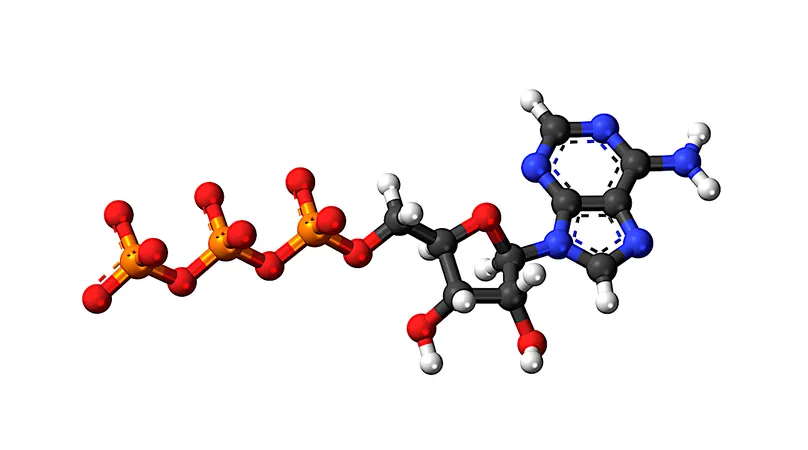
Unlocking the Secrets of Life: How Early Earth Conditions Shaped the Building Blocks of Life
2025-09-17
Author: Ming
The Role of Adenosine in Biochemistry
Adenosine nucleotides and polyphosphates are vital components of biochemistry, acting as both the foundation of genetic material and the essential currency for energy transfer within cells.
A Study on Stability and Decomposition Rates
A groundbreaking study delves into the stability and degradation patterns of key adenosine phosphates—5'-AMP, 5'-ADP, and 5'-ATP—at various temperatures ranging from a cool 22°C to a scorching 90°C. Researchers examined these compounds in different conditions, including saltwater and ultrapure water, at a pH of 4 over 2- to 4-day periods, both sealed and dried.
Heat: The Enemy of Life's Building Blocks
Results revealed that adenosine phosphates disintegrate rapidly under heat and dehydration, especially at temperatures exceeding 25°C. Among the trio, AMP showcased remarkable stability, surviving temperatures between 22°C and 55°C. Conversely, ATP began to break down as low as 22-25°C, while ADP was completely destroyed at higher temperatures.
Decomposition Breakdown
Utilizing advanced quantitative 31P-NMR, researchers tracked how these compounds broke down into various phosphorus-rich species. AMP primarily turned into phosphate, pyrophosphate, and even 2',3'-cAMP. In contrast, ADP and ATP decomposed into AMP, phosphate, and cyclic forms, with some intriguing dimeric nucleotide species appearing in experiments.
A Prebiotic Synthesis Laboratory?
The research also explored how N-containing additives like cyanamide and urea facilitated the assembly of adenosine monophosphates from phosphate and adenosine at temperatures between 65°C and 70°C. The key players included cyclic 2',3'-AMPs, suggesting that these compounds could form in semi-arid, evaporative environments that mimic early Earth conditions.



 Brasil (PT)
Brasil (PT)
 Canada (EN)
Canada (EN)
 Chile (ES)
Chile (ES)
 Česko (CS)
Česko (CS)
 대한민국 (KO)
대한민국 (KO)
 España (ES)
España (ES)
 France (FR)
France (FR)
 Hong Kong (EN)
Hong Kong (EN)
 Italia (IT)
Italia (IT)
 日本 (JA)
日本 (JA)
 Magyarország (HU)
Magyarország (HU)
 Norge (NO)
Norge (NO)
 Polska (PL)
Polska (PL)
 Schweiz (DE)
Schweiz (DE)
 Singapore (EN)
Singapore (EN)
 Sverige (SV)
Sverige (SV)
 Suomi (FI)
Suomi (FI)
 Türkiye (TR)
Türkiye (TR)
 الإمارات العربية المتحدة (AR)
الإمارات العربية المتحدة (AR)